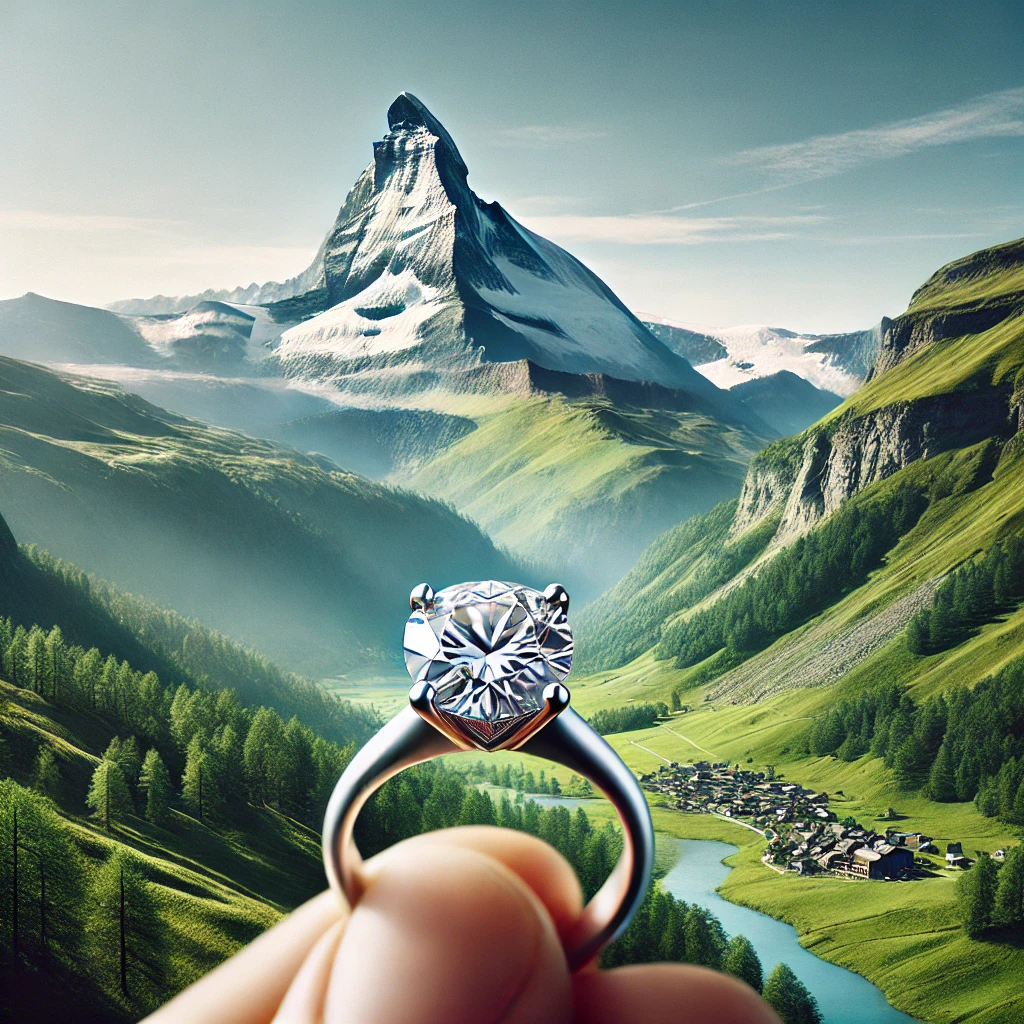
More and more people are starting to buy diamond jewellery, but what impact does this demand have on the future of our planet? The new generation has largely shifted their focus on sustainability and caring for our planet. How can we achieve these in the diamond industry?
Environmental impact
While diamond exploration is great as it benefits a community by creating jobs and has little-to-no environmental impact, diamond extraction is quite the opposite. There are many diamond mining techniques but one of the most used ones is “open-pit mining” – which is exactly as it sounds. It involves digging large pits to remove layers from our surfaces to reach kimberlite deposits that contain diamonds. However, this requires huge areas of land and an excessive amount of energy for extraction. It sometimes leads to loss of habitat for many animals, deforestation and soil erosion. The loss of habitat leads to loss of biodiversity and interruptions in food chains. Moreover, if not carefully managed, a lot of pollutants can be released especially contaminating water from the release of harmful chemicals and unsafe disposals.
The immense need for energy and emissions from machinery leads to increased greenhouse gas emissions and thus, contributes to the escalating threat of climate change and global warming.
How can it be mitigated?
What are some alternatives or solutions to reduce this negative impact? As technology advanced, so have more sustainable options.
Firstly, there has been a rise in lab-grown diamonds. Why are these more sustainable?
- Environmental impact
- No mining
- Lower carbon footprint
- Ethics
- Conflict-free
- Better and safer working conditions
- Clear supply chain: traceability and transparency
- Resource efficiency
- More efficient use of water and energy
- No disruption to the habitat
Moreover, other efforts are being made to mitigate the environmental impacts of natural diamonds too! Companies are investing in sustainable mining practices or green mining technologies such as using renewable energy and recycling water and taking the crucial step of land restoration after the mining has occurred.
Fun fact: Did you know companies are now creating recycled diamonds? Thrifting and vintage fashion have sparked a new wave of excitement, but did you know that diamonds can also be repurposed?
Social and ethical considerations
The social impact of diamond mining has been a concern for a long time. The “conflict diamonds” that have been sourced from war zones and sold for armed conflict have brought major concerns and consequences such as exploitation and violence.
How have these issues been addressed?
The Kimberley Process (KP), established in 2003, is a multilateral trade initiative that unites governments, civil society and the industry to prevent the circulation of conflict diamonds. Made up of 59 members, they implement safeguards on rough diamond shipments to make them conflict-free.
Regarding traceability, some certifications are essential to ensure the ethical sourcing of the diamonds. Two of the most common ones are the Responsible Jewellery Council (RJC) and the Gemological Institute of America (GIA).
Making an informed decision
The role of consumers and businesses is essential in making an informed decision. As a consumer, we encourage you to research and ask about the diamonds you are buying; where are they from, what was the process from mine to market and emphasise the importance of ethical sourcing. Support brands that are ethical and use sustainable practices. On the other side, there is corporate responsibility which includes the role of promoting ethical and sustainable practices, including transparency in supply chains and limiting environmental impact.
What we do at Tim & Co.
“At Tim & Co. we celebrate every moment in life. Engaging in sustainability was an evidence for us.”
We offer laboratory-grown diamonds whose production is thoughtfully controlled by our experts. This process allows us to reduce considerably the negative impact of mining while holding the same scintillation as natural diamonds.
We took an ethical approach in selecting our suppliers, ensuring they strictly follow the Kimberley Process, which we are deeply committed to, offering perfect traceability from mine to market. We provide a Certificate of Authenticity to guarantee the diamonds’ responsible sourcing.
In order to minimize our carbon footprint, we use sustainable packaging certified by the Forest Stewardship Council® (FSC®), which is the highest certification for responsible forest management.
We are glad to use our platform to make a meaningful and relevant impact in the world, especially towards our planet. Each month, we donate 1% of profits to the World Wildlife Fund (WWF), a Swiss-based NGO that works towards preserving nature and limiting human impact on our environment.

